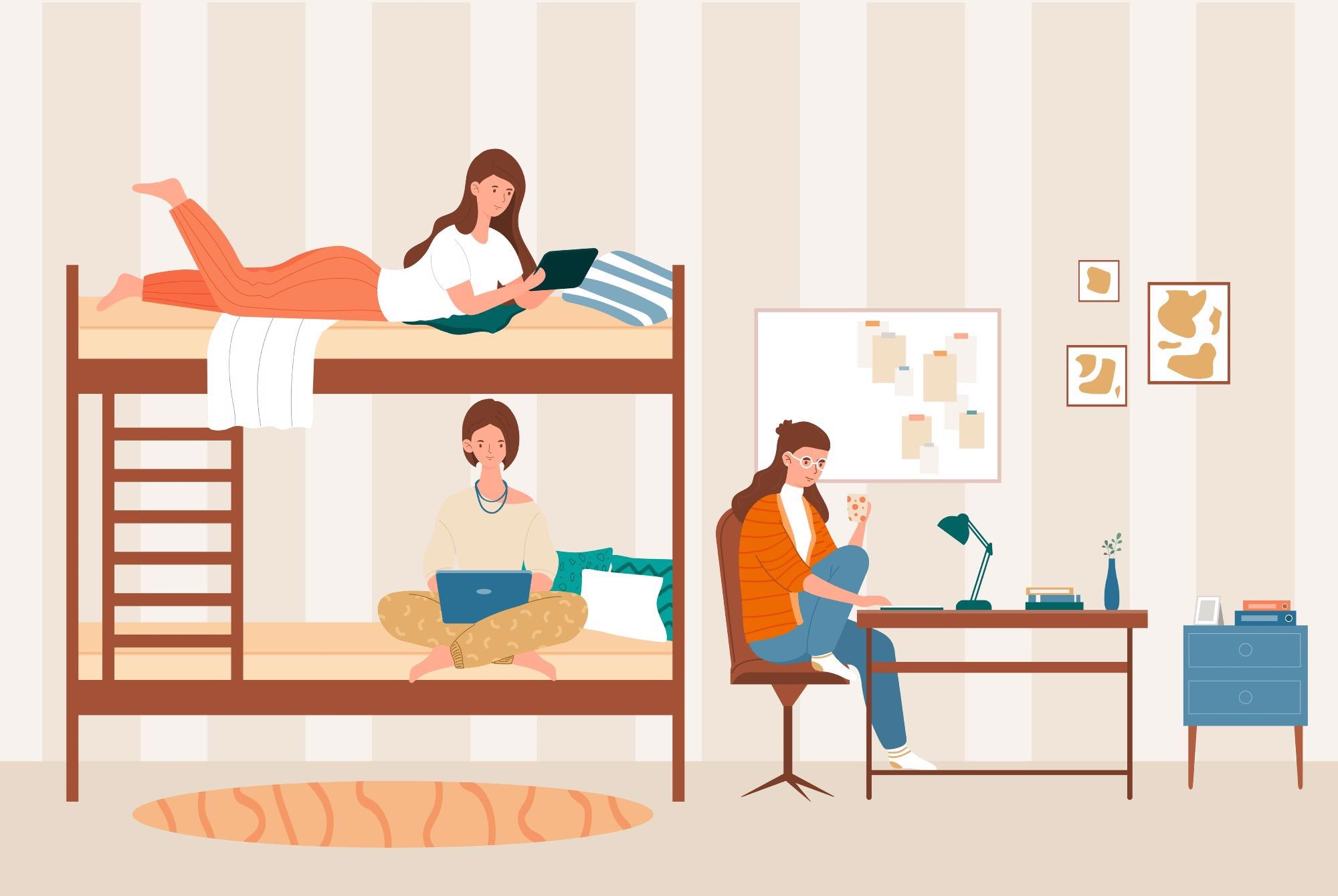Humans have been living together in community groups since our very first upright steps, and probably even before that. But the industrial revolution, social changes, and new technology of the last few hundred years have made communal living a thing of the distant past for many people around the world. Today, architects are returning to communal living models which promote personal connections, sustainability, and – say proponents – the good life.

Image Credit: mentalmind/Shutterstock.com
What is Communal Living?
While humans have been living together in communities since we formed our first hunter-gatherer proto-societies (and probably since before that, too), modern communal living takes on distinct forms, necessitated by the different pressures and demands of our industrialized lives.
In some cases, communal living is simply an effective way to temporarily reduce your household rent and utility bills. This kind of communal living is practiced by students living together in shared houses, programmers in the “hacker homes” of Silicon Valley like the house that Mark Zuckerberg and his Facebook co-founders rented during Facebook’s start-up phase, and young professionals in global cities where housing and rent prices have skyrocketed above the rate of inflation (Barcelona, London, Dublin, New York, and many more).
Some examples of communal living today are more intentional than this, and residents aim to live together for a longer term. From the mid-twentieth century, various alternative social and housing movements have embraced communal living experiments. The “baugruppen” (building group) movement in Berlin is still bringing people together to cofinance entire apartment blocks, underwritten with a government grant.
“What We Share”
A Norwegian architecture firm, Helen & Hand, is developing architecture for the future of communal living. The firm’s founders, Siv Helene Stangeland and Reinhard Kropf shared their communal housing project concept in a walk-in installation as part of the National Museum of Norway’s exhibition at the 17th Venice Architecture Biennale in the Italian city in 2021.
The installation, titled “What We Share: A Model for Cohousing,” invites visitors to think about how relinquishing the idea of living in a sealed family or single unit could lead to a healthier lifestyle – for the building’s environment as well as its occupants.
The Biennale exhibition is more than just a concept, however. “What We Share” is based on a 40-unit cohousing project in Stavanger, Norway, called Vindmøllebakken. Vindmøllebakken was completed in 2019, and both of its architects have been living there ever since. Helen & Hand currently has another five communal living projects in its pipeline for future development.
Digital opening The Nordic Pavilion: What we share. A model for cohousing
Video Credit: Nasjonalmuseet/Shutterstock.com
Stangeland and Kropf’s approach is dissimilar to the “hippy” communes of the 1960s and ‘70s, often connected with “back to land” movements that encouraged people to live off the grid, growing as much of their sustenance as possible, and pooling their incomes together. But it is also a far cry from the shared living in unadapted houses that many adults are forced into around the world.
The Norwegian architects based the Vindmøllebakken project and the “What We Share” installation on a tradition of Danish cohousing, where residents own their private homes but share communal areas. In the installation, this concept is expanded further, as residents have a stake in common spaces and decide how to run them together.
Kropf, quoted by CNN, recently said:
“Most cohousing projects we know of in Scandinavia, maybe they have a common space, but this is not owned. You get those architectural benefits by having this beautiful, generous common space, which (many) can't afford.”
Is Living Together the Best Way to Live Sustainably?
Many proponents of communal living argue that it is a better way to live sustainably, with minimal negative impact both on local ecosystems and the overall health of the planet. Stangeland and Kropf have shown how Vindmøllebakken residents reduced their carbon footprints significantly due to needing less space (taking up fewer materials, using less energy to maintain, and so on) and sharing appliances such as laundry machines.
Vindmøllebakken also made use of locally sourced timber, which reduced its impact by 70% compared with a similar project using steel and concrete, according to the architects’ calculations.
With a growing population around the world, and especially a growing proportion of the population living in cities, we may have to embrace alternatives to the status quo of Western living arrangements (one nuclear family per housing unit) to protect the environment.
Enabling more people to live together reduces the amount of land required for housing, as well the materials, energy, and transportation required for construction and maintenance. In this way, communal living tackles two related but separate sustainability issues at once: it reduces the spread of concrete and infrastructure into wild areas vital for the planet’s health, and it helps humans to live as efficiently as possible in terms of our use of resources.
For many people practicing communal living, the sustainability benefits go hand in hand with social benefits. For Stangeland and Kropf, these benefits are just as important. Communal living can lead to lasting community relationships, which benefit all members of the community. Communal living experiments of the future would do well to remember this, the architects believe, and should work to enable communities to form within them.
If you have a rental apartment it is more difficult to build...a long-lasting community. We think that by empowering the inhabitants, shareholders and participants, you have more open processes and it's more democratic and transparent.
Reinhard Kropf, Helen & Hand
Reference and Further Reading
Palumbo, J. (2021). These architects believe communal living is the way of the future. CNN. Available at: https://edition.cnn.com/style/article/cohousing-helen-hard-venice-biennale/index.html.
Disclaimer: The views expressed here are those of the author expressed in their private capacity and do not necessarily represent the views of AZoM.com Limited T/A AZoNetwork the owner and operator of this website. This disclaimer forms part of the Terms and conditions of use of this website.